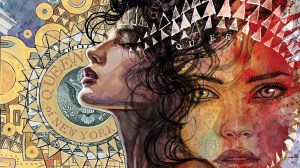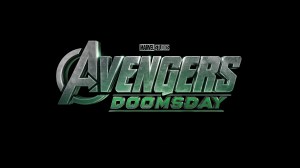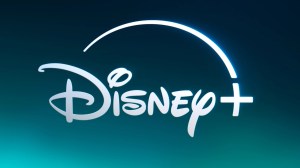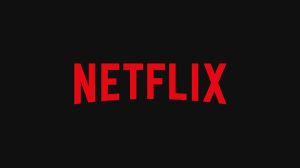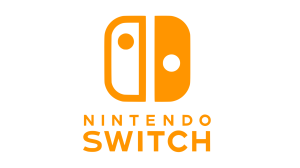After a brief cameo of sorts by Howard Beale in the pages of the Doomsday Clock ashcan, ComicBook.com sat down to watch Network with an eye toward how Paddy Chayefsky’s classic satire of the media might have significance to the world of Watchmen — and we were surprised by just how much we found.
Videos by ComicBook.com
While some of the similarities, parallels and coincidences come from Watchmen and are likely creations — intentional or no — of Alan Moore and Dave Gibbons, it is difficult to ignore some similarities between the works when Geoff Johns, Gary Frank, and Brad Anderson literally name-drop the film’s main character in the first few pages of Doomsday Clock.
Network begins with a caucophony of news footage from a number of screens — an image that mirrors its ending. The beginning and ending of Watchmen mirror one another as well — which could be an intentional thing or simply a popular narrative device being utilized by two master craftsmen who were creating their opus around the same time.
That said, the wall of TV monitors would become a familiar look in readers of Watchmen, and it is one that carries through to Doomsday Clock. Ozymandias’s fascination with being immersed in the news is one of his defining characteristics, and it is likely no coincidence that both Watchmen and Network share similar imagery — and then Johns and Frank elected to reuse that imagery for Doomsday Clock.
There are a number of cosmetic similarities between the two: Network takes place against a mostly-New York backdrop like Watchmen, with its fictional network juxtaposed with real-world settings, brands, and the like. UBS, the network from Network, appears briefly in Doomsday Clock #1, but that is hardly the only parallel there. In a world filled with familiar political and entertainment names, Watchmen and Doomsday Clock drop Adrian Veidt’s products and company into the landscape.
That includes media, where Veidt’s company is advertised throughout Watchmen. By the time Doomsday Clock is happening, Veidt’s image is out of control and he no longer advertises…although like Network, the “final broadcast” montage of TV monitors playing the news are interrupted by commercials. That decision feels a bit more seditious in Network, which used real-life brands like Life cereal and Canada Dry against the image of Howard Beale’s corpse, but the sensibility is nearly identical.
The character stuff
“Don’t do it, buddy. You’re a young man, you got your whole life ahead of you” is what the cabbie told Frank in his oft-repeated story in Network. That philosophy — that playing it safe is the prerogative of the young and/or vital — could apply to Ozymandias, who appears to be sick or dying at the start of Doomsday Clock.
Beale’s entire journey, meanwhile, is one of a desperate idealist fighting against a prevailing, fatalist worldview. One could argue that Beale, then, could represent Superman in the post-Watchmen, grim-and-gritty comics landscape — and in Doomsday Clock in particular, since the story has been described as a conflict of ideas between Superman and Doctor Manhattan.
Of course, trying to say “Howard Beale is” and then name any particular character is folly here; if anything, bits and pieces of Beale and the character archentype he represents can be applied to various characters, with the most obvious one being Rorschach.
The narrator in Watchmen, Rorschach’s worldview is the one most explicitly spelled out for us — which is arguably true of Beale, although his worldview tends to change as each successive “vision” challenges it.
That said, the slovenly, rambling man in a trench coat is an image that Watchmen fans will recognize.
Other ways that Beale feels like Rorschach: his flowery speeches full of ugly imagery, alternately compelling and repulsive — and the moment when his anti-OPEC monologue (briefly) brings Hackett’s life down around his ears feels very much like what Ozymandias experiences at the start of Doomsday Clock as a result of Rorschach’s journal being made public.
All of these similarities to Rorschach, of course, culminate with the conspiritors realizing, “I suppose we’ll have to kill him.”
During his famous speech near the end of the film, Jensen — who refers to Beale as “an old man who thinks of the world of nations and peoples” and implies that his convictions make him out of touch with reality — feels a bit like Veidt’s relationship to Rorschach.
And during their breakup, Frank says he will not be destroyed by Diana, whom he considers to be cold and detached from humanity, the embodiment of television.
He will not be destroyed, “not as long as I can feel pleasure and pain and love,” and giving his humanity that kind of overt form to juxtapose against the frigid and distant Diana feels a bit like something we may see from Superman and Doctor Manhattan.

The story stuff
In Network, one of the most then-contemporary references in the newsroom was President Gerald Ford’s speech following an attempt on his life by a follower of Charles Manson. The speech used the phrases “hostage of the Oval office” and “victim of would-be assassins.”
This mirrors the Vice President’s hostage crisis at the White House in Doomsday Clock #1 — and while it is likely not Ford who snapped and took the Israeli foreign minister as his prisoner, Ford was referenced in the first few pages of Watchmen #1, his photo in a frame at The Comedian’s apartment.
During Beale’s “bulls–t” speech, he asks, “Who needs God?” and then later “finds” God and becomes His agent for much of the film, building his persona around the iconography of televangelism. This could be seen as a parallel to the events of Watchmen into Doomsday Clock.
Doctor Manhattan is repeatedly referenced as “God” in Watchmen, and his departure at the end of the series has an element of God leaving man to fend for himself to it. In Doomsday Clock, with the world teetering on the edge of oblivion, Rorschach narrates that he will have to “bring God back — kicking and screaming if necessary” or something to that effect.
The movie, like Watchmen, is full of real-world references, even to pop culture, giving it a dated sensibility, but it chooses those elements very well, lending a kind of timeless quality. In both cases this is done by selecting names and events for reference who have longer-term historical significance than just the headlines of the year.
One particularly odd moment stuck out near the end: as the network executives are plotting the assassination of Howard Beale, one of them says that whatever happens cannot be traced back to the network.
Hackett’s wry smile when someone asks if there are any “hidden tape machines” that could bring their Ozymandias-style plan to the world feels a bit like an implication that there could be, but he would never say it. That gives the scene a bit of a Watchmen feel, with Rorschach’s journal appearing on the final page but not being opened on the page, leaving readers to wonder (at least until next month) whatever happened to that information.
So, like Rorschach, Beale may be dead, but he could still be the downfall of those who believe themselves smarter than him, if things play out just right…!



